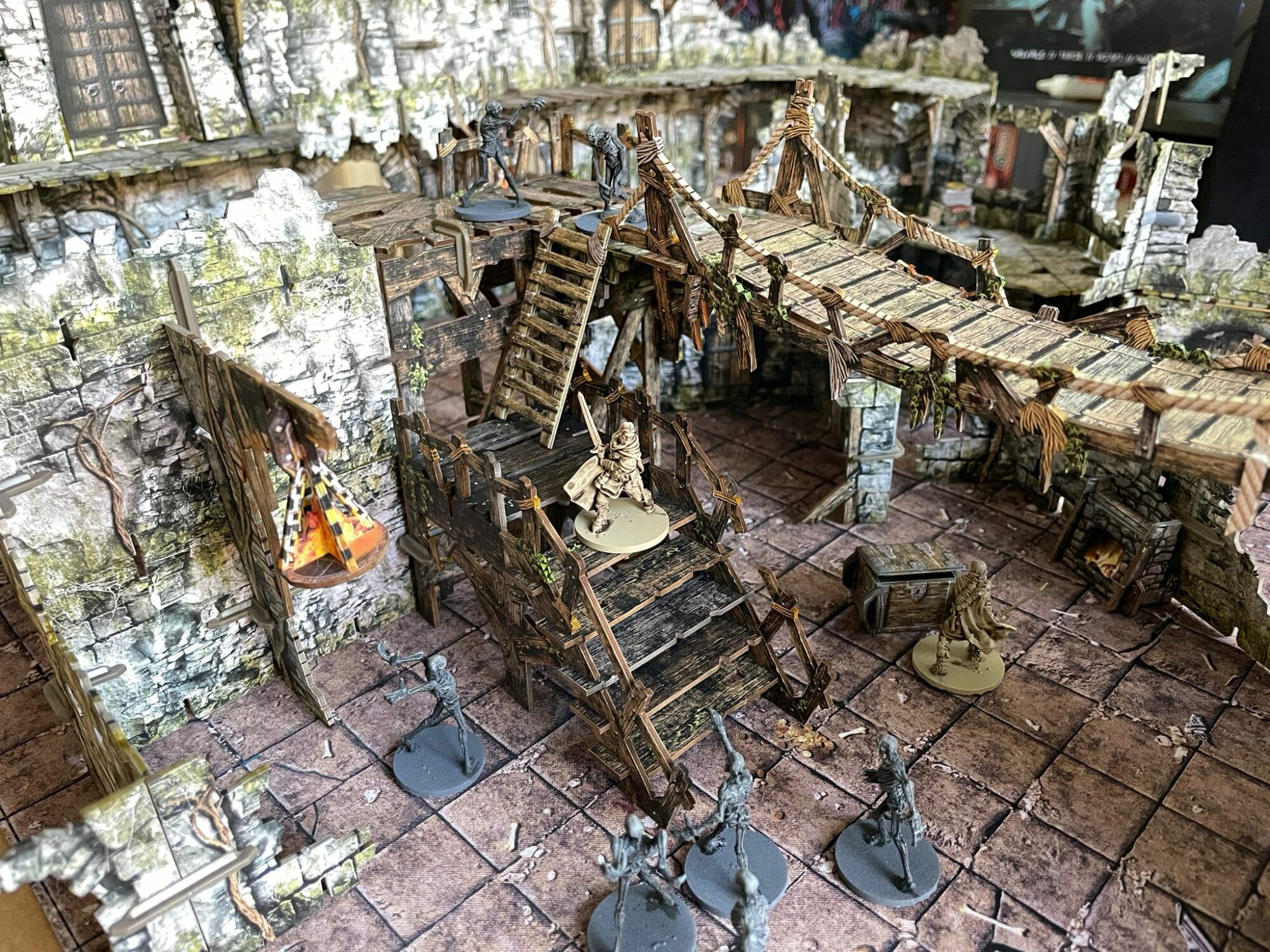
Our work on Maladum: Dungeons of Enveron continues. The game demo and new dungeon terrain got a superb reception at UK Games Expo 2022, and we’re continuing to refine the rules, terrain, artwork and minis ready to launch the game.
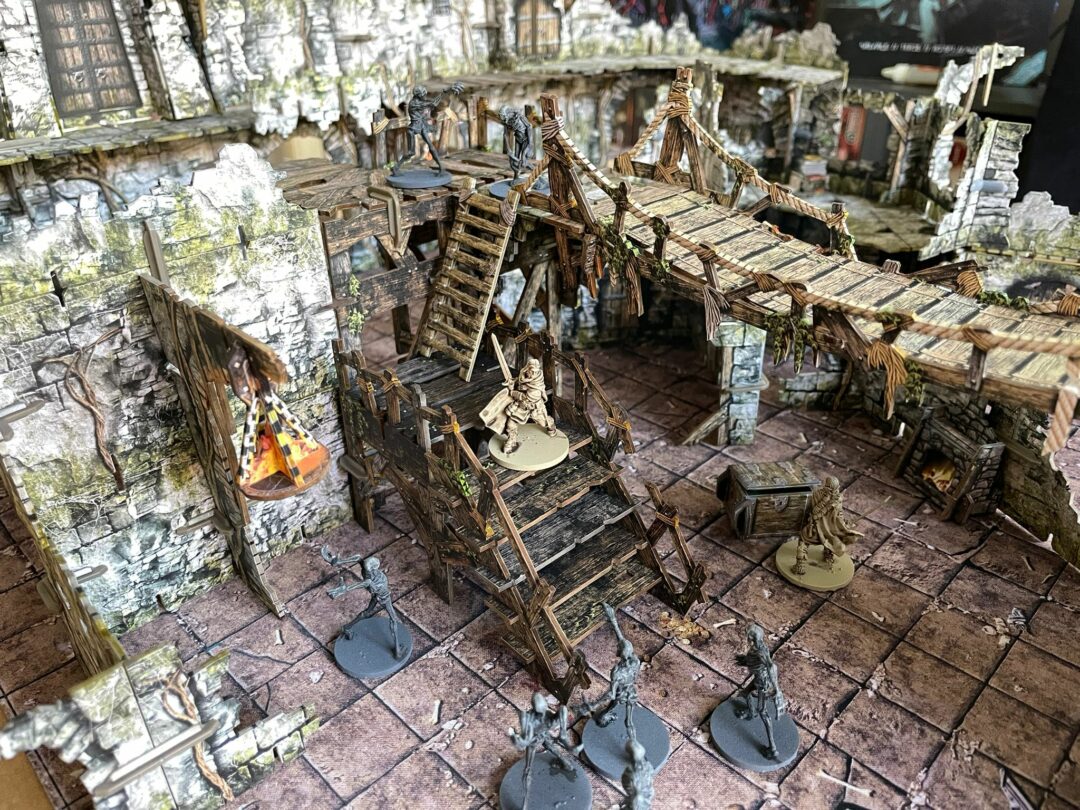
If you missed our previous article on how we’ve translated the Core Space engine to a fantasy setting, check it out HERE.
Now I’ll hand you over to our resident loremaster Wayne for an introduction to Enveron – the world, its people, and the mysterious force known as Maladum.
THE WORLD OF MESA
The world of Mesa was once part of a vast galactic web. For thousands of years Mesa dominated its sector of space utilising technology from many different species. At its height Mesa’s central source of power was a network of relays encircling the local star. The relays transmitted refined plasma to mile-high Transmitter Towers which then channelled power around the world feeding the technology hungry nations.
But technology itself would be Mesa’s undoing, as a rogue nanotechnology based organism swept through Mesa destroying all advanced technology. The organism had no objective but to rend all that it touched into base elements. Afraid of contamination, the galaxy placed Mesa in quarantine, the inhabitants left to their fate. Over time Mesa was forgotten and the survivors learned to live in a new dark age without technology or limitless power. This cataclysm was known as the Fall.
THE KINGDOMS OF ENVERON
In the continent of Enveron pieces of the old world did survive and would eventually form Maladum, the basis of all magic. During the long climb from a dark age many kingdoms have come and gone, trading mineral wealth, fighting amongst themselves and being ignorant of their own past. With its mild climate and relative geological stability the inhabitants of the continent of Enveron have prospered. To these people, cut off from other continents by distance, Enveron is their whole world, each kingdom rich with its own history, folklore and traditions.

As the cultures of Enveron evolved so did their forms of trade. In the smaller villages the people rely almost entirely on a barter system but metal coins and ingots are acceptable. Gold, silver and iron retain their worth but other exotic ores are even more valuable. Blue-grey Kelt can be smelted with iron to make Keltic steel, to make lighter and stronger weapons and armour. The red-orange Graam can be used as a conductor for magical items able to store energy. Gemstones are also common currency, valuable not only as baubles for the rich but for their useful refractive properties when crafting magical items.
The closest Enveron has to a universal currency is the Guilder. The influential guilds of the kingdoms have agreed the currency between them. All forms of currency can be exchanged for Guilders, which comes in two forms, minted coins and ingots of various ores, and, for larger amounts, printed bonds with different denominations – in other words paper money. The common clay don’t take too kindly to paper currency as it has no worth in itself but, so established is the Guilder that it has to be accepted, no matter how grudgingly.
The influence of the guilds is not only in trade but in learning. Young apprentices are taught a trade and in exchange they pledge allegiance to their guild in the form of fealty, usually for life. The guilds are therefore extremely influential, often more so than kings and queens.
See also: The Kingdoms of Enveron PDF for a larger map of Enveron and more on its geography and kingdoms.
THE PEOPLE OF ENVERON
The most numerous inhabitants of Enveron are the human descendants of the first settlers. They are a pragmatic people, living a tough life by our standards, but prospering. There is relative stability between the kingdoms and they are entering a renaissance era, the brutality of a dark age starting to fade but for the sudden rise in Maladum, which threatens to destroy all progress.
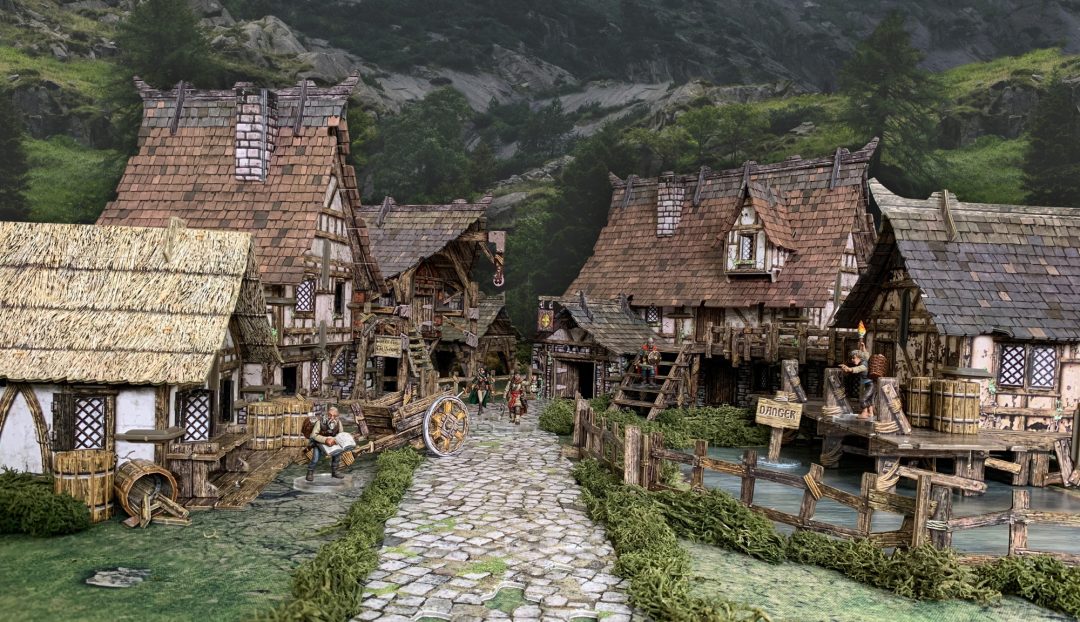
Although they are the most numerous, humanity is not necessarily the most dominant species; they must compete with others. Any cobbled street will host a number of fantastical creatures such as the Kindred, the collective name of the hybrid species descended from the aliens and humans stranded on the world after the Fall. These hybrid species were created thousands of years ago and are not the result of natural evolution. The concept of extra terrestrial beings doesn’t exist to the inhabitants of Enveron; to them the Kindred are simply other indigenous creatures. Notable Kindred include the Eld, the Dwella and the Ormen.
Tall, slim, with a nose-less face and mammalian hind legs, an Eld could only be mistaken for human in dim light. They are a fierce people, insular and untrusting of others. Extremely volatile and emotional the Eld can swing from drunken gregariousness to berserker rage. Although highly intelligent their explosive natures mean their tribes bear ancestral blood feuds against each other. Eld adventurers are often exiles or eccentrics who cannot live amongst their own people.
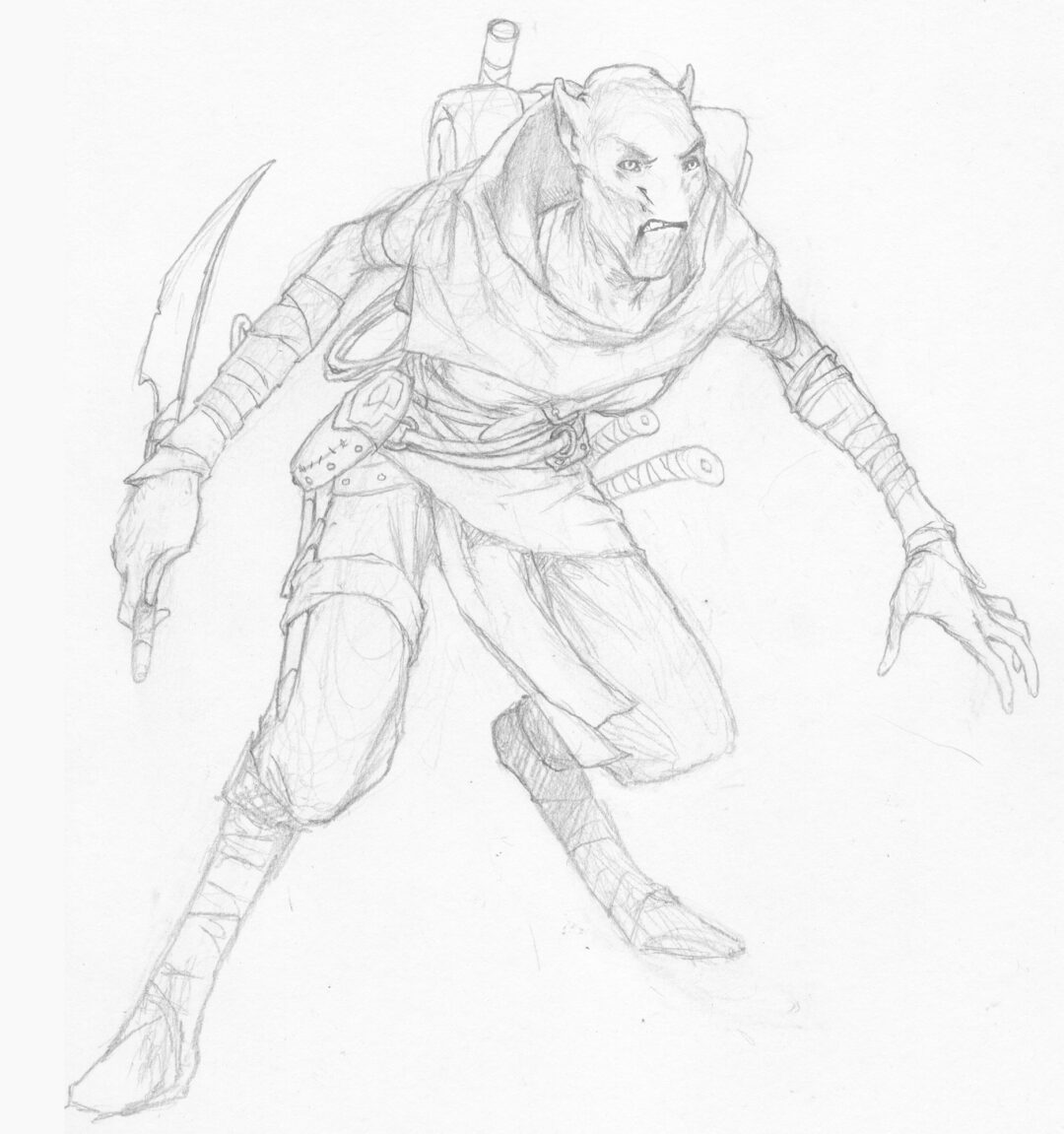
GALEN GEN’RUN
Galen is the lone survivor of a massacre. The infant feral Eld was raised by civilised Eld thinking they could curb the excesses of her people – they could not, instead they raised an intelligent and extremely dangerous cuckoo in the nest who was eventually exiled for violence. Unwanted by both the Eld and feral Eld she has fallen into a life of banditry and, sometimes, the life of an Adventurer. She is a rogue and a thief, as likely to stick a knife in your back than draw swords against a common enemy.
Even more dangerous than the Eld are the feral Eld, who appear identical to their cousins but for a flaw in their nature making them excessively savage. Feral Eld are an unwelcome branch of the family tree; with almost no cohesive society, they are a wild and dangerous form of Eld to be avoided.
The Dwella more closely resemble humans but are much shorter and more heavily built. The older males have impressive facial tusks and all have ‘silver-coin’ eyes giving them the ability to see in almost total darkness. Despite their fierce appearance the Dwella are mostly peaceful and live as skilled tradesmen. Fewer Dwella are born each year and they are slowly becoming extinct as a race. There is evidence that the Dwella and Eld share a common ancestor.
The Ormen were once a fearsome race of warriors who swept across Enveron in a wake of destruction. Their strength was in brute fighting, but not in organisation, and cities captured by the Ormen were soon relinquished, the Ormen bored of administration and looking for new challenges. Over time the Ormen integrated into the very civilisations they had once conquered, their fierce origins almost forgotten.
GROGMAR OF THE GREY
Grogmar grew up in a small village where his strength of arm and gregarious nature were far more important than his species. When he came of age he travelled to the far-off cities of his childhood dreams to discover city-folk weren’t so welcoming of his kind. Dissatisfied with the second rate status accorded him he travelled the whole of Enveron stopping only to work as a seasonal farmhand or occasionally as a mercenary in a local dispute.
The life of an Adventurer was a natural step for him and he is never happier than cleaving monsters in deserted tombs or drinking his hard fought proceeds away in seedy taverns. Grogmar has no thoughts for the future, taking each day as it comes and enjoying the surprises that his life affords.
Although there are still small tribes of Ormen that retain their fierce nature the majority are now relatively friendly. Many Ormen can be found living alongside the races of Men working as ordinary tradesmen or swelling the ranks of local militias.

Many Adventurers are from the Kindred races. The majority of Adventurers are, however, from the races of Men, rogues and misfits who resist the lives of serfs and farmers and crave excitement or riches.
MALADUM – MAGIC BY ANOTHER NAME
To the people of Enveron magic is a very real thing. Almost everyone would have seen an example of magic during their life or knew others who had. Rumours and tradition would bolster the reputation of magic, for good and ill, and of those who practised it. In reality magic is the re-emergence of a long dormant technology, a variant of the very organism that destroyed the civilisations of Mesa thousands of years ago. Maladum allows the user to manipulate the environment using their will. It is an advanced technology, evolved far past its original purpose, but to a medieval people it is simply magic.
Maladum started in two very different mediums; a form that existed as optical data, extremely dense information stored as light, and biological nanites. The optical data was held on diamantum, the hardest substance known, and has a near perfect ocular refraction. The data could only be accessed by those with the correct genetic ‘key’.
The nanites were microscopic nano-machines designed to give their host an advantage over their peers. The biological nanites were irreversibly fused into the DNA of its host cells and could be passed on to later generations. They were engineered to allow the direct manipulation of technology as well as heal wounds, prevent aging and even reverse death. Even at the height of Mesa’s dominion the nanites were rare and reserved for the ultra wealthy. After the Fall, however, and without technology to restrain them the nanites were soon everywhere – in the air, in the water, in living creatures, and always slowly evolving. Over time the two forms met and fused to create Maladum. Information and motility had combined into a new substance that was no longer shackled to a single form, that could easily be expressed as liquid, gas or an electromagnetic force. Maladum itself has no motive, bar its own survival, but it can be harnessed and used to influence the physical world.
The practitioners of Maladum are commonly known as Maladaar, and they are able to manipulate the environment through sheer force of will. There are different types and levels of Maladaar, some are relatively weak in Maladum and rely on magical tools, others are so powerful they are a danger to all around them.
As with most things in life magic comes with a price – indeed Maladum literally means the ‘curse-gift’. Left unchecked the Maladum can kill its host so it must be controlled and restrained, harnessed and subdued. Magic guilds were established to find and train fledgling Maladaar before they could hurt themselves or others. In many ways the means to control Maladum also stifles it, and the majority of Maladaar will never reach their full potential.
THE MALAGAUNT
Raising the dead is practiced by individuals well versed in more sinister arcane arts. A Malagaunt has complete mastery over dead organic material and is able to bring the dead back to a ghastly half life and even combine different organic materials to create new creatures.
The Malagaunts are rarely guild trained and so their control of Maladum is unfettered, making them more powerful than the usual Maladaar but at a much higher price. Without suppressive training the Maladum causes massive cell deterioration, insanity and eventually death. The Malagaunt believe that the Maladum requires a ‘sacrifice’, of themselves and others, and it is a price they are willing to pay – the Maladum eventually destroying them and all of those around them.

The Malagaunt’s undead servants are known as Revenants. Their origins are not supernatural but technological, they are poorly resurrected corpses, the Maladum able to make the dead move but not truly live. These unfortunates have no will of their own and are controlled by a Malagaunt. It is possible that the Revenants retain a spark of their original personalities, looking out from dead eyes but unable to do anything but watch the desecration of their own bodies.
There are many different types of Revenants, all pitted against any Adventurer foolhardy enough to enter a Malagaunt’s domain. Malagaunts will often hoard corpses in large crypts or depositories, covering the bodies in preserving fluids and burying them to be ‘awoken’ when needed as fighting troops. These are the Lamentors, horrific and corpselike, the method of their resurrection causing them to scream, chilling any Adventurers unlucky enough to encounter them.
The Malagaunt is able to reconstruct the long dead combining parts to form a whole creature, the Myria (see image). Missing limbs are rebuilt with any available dead matter such as vines or even the rotting coffins of the dead.
Malagaunts also like to experiment and attempt to create new ‘life’ in the form of Hellfonts. Although they look like amalgamations of dead animals the original materials are in fact human as they retain more Maladum than beasts. Upon death Maladum leaches away from a corpse so Malagaunts like a constant fresh supply. Multiple corpses are flayed and stitched together to create a grim mockery of life bearing both tentacles and limbs and a large eyeless head and tooth filled maw.
Wandering beasts such as Trolls can also be used by the Malagaunt, effectively making them mobile traps. Trolls are large and solitary and although they are peaceful when left alone they will attack on sight and must be regarded as a threat. A troll revenant is known as a Rot Troll, similar to living trolls but more vicious and harder to kill.
The Malagaunt prefers an environment conducive to experimentation, the easy accessibility of corpses and to be free from prying eyes. Therefore a Malagaunt’s domain tends towards dungeon keeps and fortresses, rather than ones of luxury and wealth. In these gloomy havens it’s not just the undead that the Adventurers need fear; hidden traps will snare the unwary and living creatures such as Cankers, Drakons and Troglodytes will attack on sight.
CANKERS
Blind and parasitic, Cankers are drawn to those with the highest level of Maladum and will feed off the unfortunate victim until they are a bloodless husk. The blood is spat out as a waste product mixed with bile forming a corrosive venom. It is unusual for dumb creatures to have a high level of Maladum but they actually need it to survive, it’s their only form of substance and they will quickly shrivel and die without a constant source.
Although small and easily killed creatures such as Cankers are a dangerous distraction in a fight for survival!
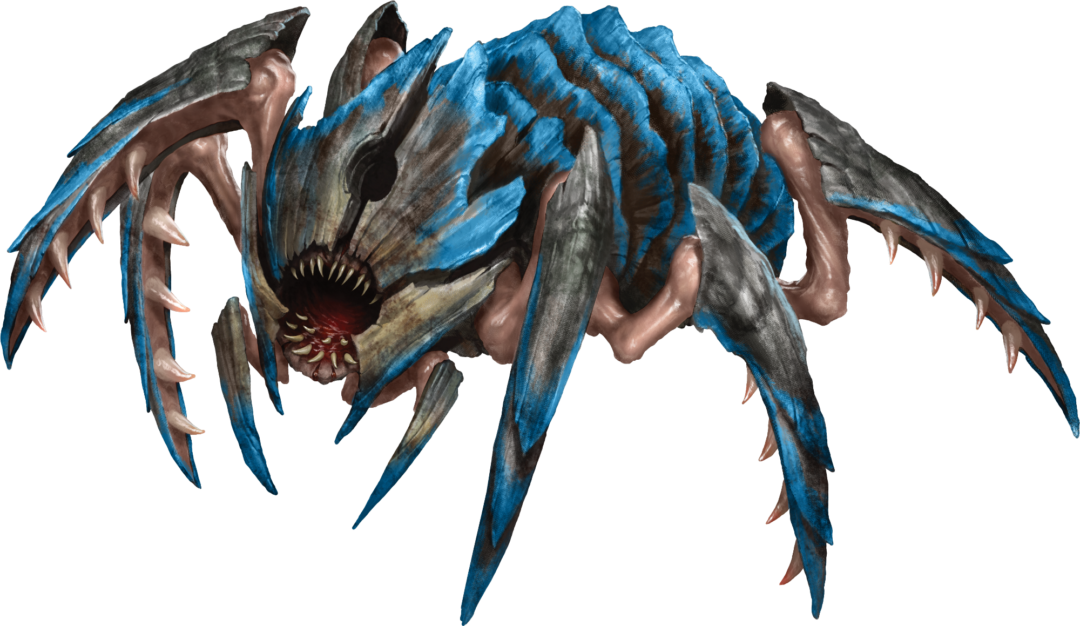
In recent years the Malagaunt have formed a Cabal, a loose affiliation of untrusting, treacherous Maladaar who work together to bring about a new age of magic. They have installed many structures across Enveron that resemble the power transmitters of old. However, rather than drawing power from the stars the transmitters draw power from Mesa itself, draining the land of life and feeding the Malagaunt raw power. The Malagaunt may well be bringing about their own destruction by encouraging the rise of Maladum, and the possibility of a new rogue organism. It is likely that they know and simply don’t care…
Well, that’s all for now, but we’ll back soon to take another look at the world of Maladum. This is all a work in progress and may still be subject to change in the finished game. Let us know your thoughts on this preview, your questions, or details of anything else you’d like to see in the game, in the comments below.
To ensure you don’t miss out on our updates, or on the Kickstarter launch, sign up HERE.
Until next time, happy gaming!
The Battle Systems Team



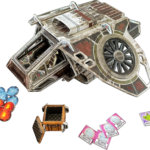
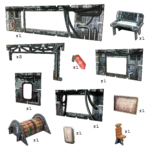
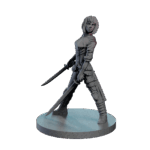
Adrian Scherrer
February 10, 2023 at 2:09 pm
Hey Dear Battle Systems Crew
I really like your products and I’ve been wondering if there is a new update on the Maladum sets somewhere? Do you know the release date by now?
Greets Adrian
Stewart Gibbs
February 10, 2023 at 2:11 pm
Yep, we’ll be announcing the release date next week. Make sure you’re signed up here: https://mailchi.mp/battlesystems/battle-systems-newsletter-signup
Adrian Scherrer
February 11, 2023 at 4:16 am
Thanks a lot!
David McGregor
June 15, 2022 at 6:47 am
I’ve stumbled along this through the internet, so I’m new to battle systems. Am I correct in thinking this game can be played solo? Obviously, I have loads of mates so playing as a team wouldn’t be a problem. Asking for a friend. Also, is there a estimate for the kickstarter? Also, I have loads of mates.
Stewart Gibbs
June 15, 2022 at 8:06 am
Hi David. Yes, the game can absolutely be played solo. With Core Space, we designed each starter set campaign for a specific player count – the original game was for two crews/players and the First Born game was for a single crew (played solo or co-op).
This isn’t as flexible as we’d like, hence the difficulty scaling mechanics we mentioned in our previous article. This will allow us to build the Maladum starter set for solo play, but have the campaign easily scale up for more players without having to change the rules :-).
As for an ETA, we are hoping for later this summer, but we really want to have the game as finished as possible before launch, so we’re not announcing the date until we’re ready :-).
John Woods
June 10, 2022 at 8:24 pm
I am really looking forward to this and, at the first opportunity, will be stranding my Core Space crew here through one of those overgrown portals.
And more importantly – have you an ETA for the launch on Kickstarter?
Stewart Gibbs
June 13, 2022 at 7:51 am
We will announce the date as soon as the game is finished enough – got lots to do! Hoping for later this summer.
Carl Walmsley
June 10, 2022 at 2:15 pm
Are there plans to take games beyond the dungeon? The picture of the village suggests this might be the case – which would be great and offer all sorts of narrative experiences.
Stewart Gibbs
June 10, 2022 at 2:17 pm
Definitely. Probably not in this KS, because we’ll be focusing on the starter set and supporting products, but beyond that yes.